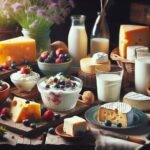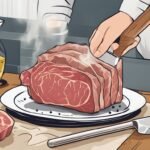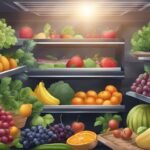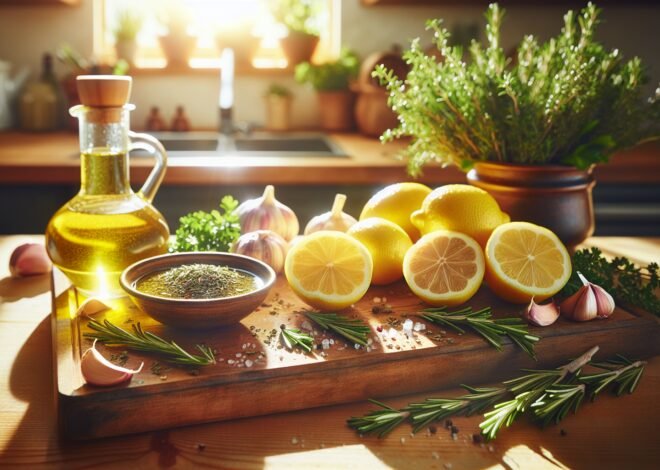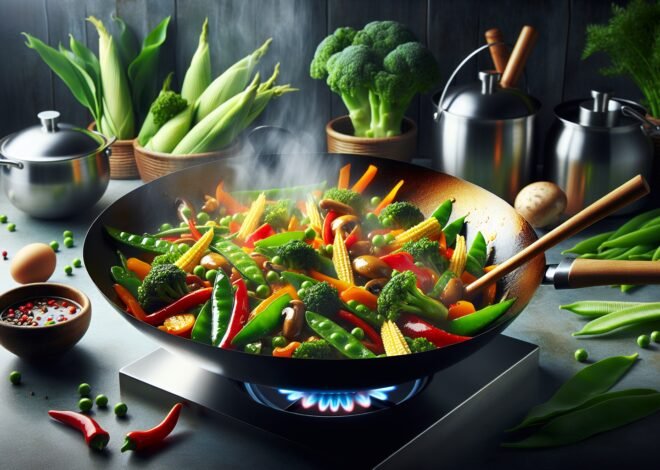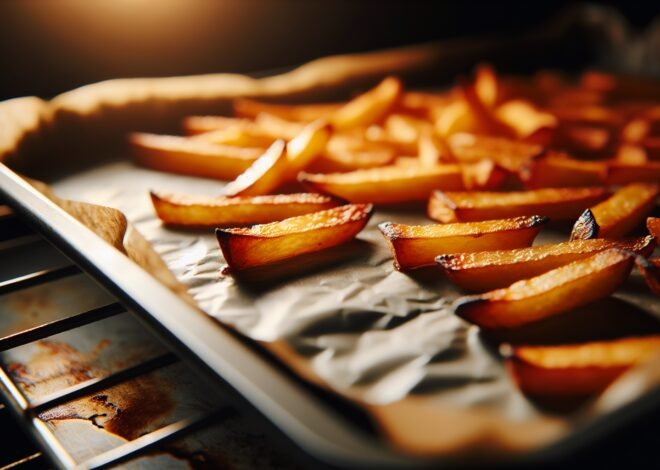
The Best Tools for Measuring Dry and Wet Ingredients
The best tools for measuring ingredients are essential for achieving culinary perfection. Did you know over 60% of cooking errors are due to inaccurate measurements? Whether you’re an aspiring chef or a baking enthusiast, using precise measuring tools for dry and wet ingredients can transform your kitchen skills. This post explores various measuring cups, spoons, and scales that ensure accuracy and consistency in your recipes. Discover how choosing the right tools not only improves your cooking results but boosts your confidence and creativity in the kitchen.
Essential Tools for Measuring Dry Ingredients
Measuring dry ingredients accurately is crucial for any successful recipe. The right tools can make all the difference in achieving precise measurements, leading to better cooking and baking results. Whether you’re measuring flour for a cake or grains for a salad, having the essential tools at your disposal ensures consistency and taste.
Precision with Digital Kitchen Scales
Digital kitchen scales are indispensable for measuring dry ingredients. They provide accuracy down to the gram, ensuring exact proportions in your recipes. Unlike traditional scales, digital ones are easy to read and often come with features like tare functions, allowing you to reset the scale to zero after placing your container.
- Highly accurate measurements
- Simple to use with a digital display
- Tare function for resetting to zero
- Compact and easy to store
Digital scales are especially useful for ingredients like flour, which can vary in volume depending on how they are packed. Weighing eliminates guesswork, ensuring the right amount every time.
Use of Measuring Cups for Dry Ingredients
Measuring cups are a staple in any kitchen. They come in handy when precision isn’t as critical, but consistency is still required. Dry measuring cups are designed to be filled to the brim and then leveled off to ensure the correct amount.
- Available in various sizes
- Stackable for easy storage
- Made from different materials like plastic, metal, and glass
- Dishwasher safe options available
When using measuring cups, it’s important to use the correct technique, such as spooning ingredients into the cup and leveling with a flat edge, to avoid packing too tightly, which can lead to inaccurate measurements.
Benefits of Measuring Spoons for Smaller Quantities
For smaller quantities, measuring spoons are the go-to tool. They are perfect for ingredients like baking powder, spices, and salt, where even a slight variation can significantly affect the taste and outcome of your dish.
- Precise measurement for small quantities
- Often come in sets with different sizes
- Durable materials like stainless steel
- Easy to clean and store
Measuring spoons help maintain consistency and balance in flavors, ensuring each recipe is as delicious as the last. They are indispensable when accuracy in small amounts matters most.
Must-Have Tools for Measuring Wet Ingredients
Measuring wet ingredients accurately is just as important as dry ingredients, particularly in baking where precision is key. The right tools can help you achieve the perfect texture and consistency in your recipes. From soups to sauces, precision in liquid measurement ensures successful culinary creations.
Accuracy with Liquid Measuring Cups
Liquid measuring cups are designed to handle the nuances of measuring liquids. They come with measurement markings on the side, allowing you to pour without needing to fill the cup to the brim.
- Clear markings for easy reading
- Variety of sizes for different volumes
- Pour spout to prevent spills
- Sturdy handle for better grip
These cups ensure that the meniscus is accurately accounted for, providing a true measurement. Their transparent design aids in getting the most precise liquid measurements every time.
Choosing the Right Measuring Jugs for Liquids
Measuring jugs offer a larger capacity for liquids and are essential for bigger batches. They often include additional features such as strainer tops or lids, making them versatile for more than just measuring.
- High capacity for larger recipes
- Strainer options for dual functionality
- Lid options for storage and mixing
- Durable material options for long-lasting use
Choosing the right jug involves considering the volume you typically work with and the additional features that might benefit your cooking style, ensuring functionality and convenience in the kitchen.
Features of Digital Scales for Liquid Measurements
While often associated with dry ingredients, digital scales can also be used for liquids by converting volume to weight. This requires understanding the density of the liquid to accurately measure.
- Converts volume to weight
- Useful for precise liquid amounts
- Adaptable to different units of measurement
- Helpful for recipes requiring high accuracy
Digital scales are ideal for liquids such as oils or syrups, where weight can provide a more precise measurement than volume, especially for recipes that require meticulous detail.
Expert Tips for Accurate Ingredient Measurements
Accuracy in ingredient measurement is critical for culinary success. Missteps can lead to altered flavors, textures, and even complete recipe failures. Utilizing the right techniques and avoiding common pitfalls ensures that your dishes turn out perfect every time.
Tips for Transitioning Between Metric and Imperial Systems
Transitioning between metric and imperial systems can be confusing, but with a few strategies, it becomes straightforward. Understanding the key conversions and using conversion tools can make the process seamless.
- Familiarize with common conversions (e.g., 1 cup = 240 mL)
- Use a reliable conversion chart or app
- Keep a digital scale handy with unit conversion
- Practice with recipes to build confidence
Learning these conversions helps in adapting any recipe, allowing you to explore a wider range of cuisines and cooking methods without measurement hurdles.
Common Mistakes to Avoid When Measuring Ingredients
Inaccurate measurements can derail even the simplest recipes. Avoiding common mistakes ensures consistency and success in your culinary endeavors.
- Packing down flour instead of sifting or spooning
- Using the wrong type of measuring cup
- Ignoring the meniscus in liquid measurements
- Not leveling off dry ingredients
Being mindful of these common issues allows you to correct your methods and achieve better results, enhancing your overall cooking and baking experience.
Importance of Ingredient Temperature in Measurements
Temperature can play a significant role in measuring ingredients, especially in baking. Cold or warm ingredients can affect the volume and weight, leading to discrepancies in measurements.
- Ensure ingredients are at room temperature
- Consider temperature effects on weight
- Account for expansion or contraction in volume
- Use digital scales to enhance accuracy
Understanding how temperature affects ingredients helps in achieving precise measurements and, consequently, culinary perfection. It is an often overlooked but crucial aspect of successful cooking.
Conclusion
The article discusses essential tools for accurate ingredient measurement in cooking and baking. It highlights digital kitchen scales as crucial for precise weight measurements. Measuring cups and spoons are recommended for liquids and dry ingredients, ensuring consistency. Liquid measuring cups with a spout are noted for their usefulness in pouring and accurate liquid measurements. The article also emphasizes the importance of having these tools for successful culinary results.
FAQ
What are the most accurate kitchen measurement tools for home cooks?
Accurate kitchen measurement tools include digital kitchen scales, measuring cup sets, and measuring spoon sets. These tools ensure precision and consistency in cooking, enhancing the overall quality of your dishes.
How do digital kitchen scales improve ingredient measurement accuracy?
Digital kitchen scales offer precise weight measurements, reducing human error. They allow you to measure ingredients to the gram, ensuring consistency and accuracy in recipes, especially in baking.
Why is a measuring cup set essential for baking precision?
A measuring cup set ensures you add the correct amount of liquids and dry ingredients, crucial for baking. Consistent use of these cups helps achieve the intended texture and flavor in your baked goods.
How do you choose the right measuring spoon set for various recipes?
Choose a measuring spoon set with clear markings and easy-to-clean material. Opt for durable, stainless steel or BPA-free plastic options to ensure accuracy across a wide range of recipes.
What features should you look for in a reliable measuring jug?
A reliable measuring jug should have clear, easy-to-read markings and a sturdy handle. Consider a jug with both metric and imperial measurements for versatility in different recipes.
Can laser thermometers be used for measuring liquid ingredients accurately?
Laser thermometers are not suitable for measuring liquid ingredients. They are designed to measure surface temperatures and may not provide accurate readings for liquids.

